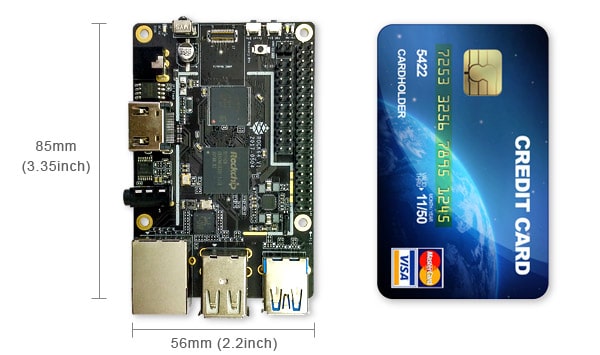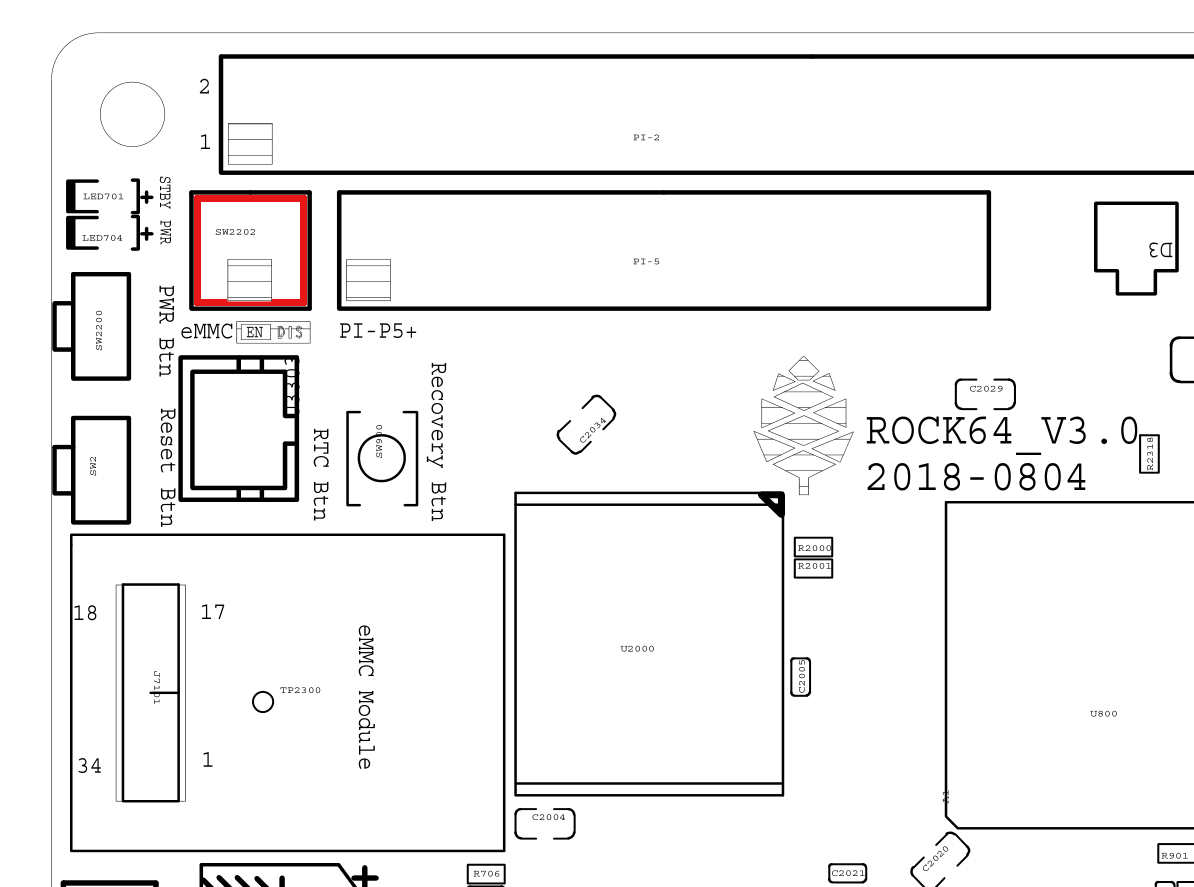ROCK64: Board features

The ROCK64 and a size comparison
Video
- Digital Video output up to 4K@60Hz
- 4K HDR @ 60fps
- H.264/AVC Base/Main/High/High10 profile @ level 5.1; up to 4Kx2K @ 60fps
- H.265/HEVC Main/Main10 profile @ level 5.1 High-tier; up to 4Kx2K @ 60fps
- VP9, up to 4Kx2K @ 60fps
- MPEG-1, ISO/IEC 11172-2, up to 1080P @ 60fps
- MPEG-2, ISO/IEC 13818-2, SP@ML, MP@HL, up to 1080P @ 60fps
- MPEG-4, ISO/IEC 14496-2, SP@L0-3, ASP@L0-5, up to 1080P @ 60fps
- VC-1, SP@ML, MP@HL, AP@L0-3, up to 1080P @ 60fps
- MVC is supported based on H.264 or H.265, up to 1080P @ 60fps
Audio
- 3.5mm A/V Jack (Composite Video Output and RCA Stereo support using conversion cable)
Network
- 10/100/1000Mbps Ethernet
- WiFi 802.11 b/g/n with Bluetooth 4.0 (optional USB dongle)
Storage
- microSD - bootable, supports SDHC and SDXC and storage up to 256GB
- eMMC - bootable (optional eMMC Module)
- 128Mbit (16MB) on-board SPI flash memory (empty by default) - bootable? Usually accessible as a Linux MTD device at
/dev/mtd0 - 1 USB3.0 Dedicated Host port
- 2 USB2.0 Dedicated Host port (top one is USB-OTG)

Position of the two-pin header for disabling the optionally installed eMMC module (highlighted in red)
Position of the two-pin header for disabling the optionally installed eMMC module (highlighted in red)
Optionally installed eMMC module can be disabled by placing a jumper onto the two pins on the separate two-pin header, located near one of the mounting holes and two side-mounted buttons. See the picture in this section, in which this two-pin header is highlighted in red.
Expansion Ports
All GPIO pins, including UART, operate at 3.3V. (See VCCIO5 in the schematics.)
- 2x20 pins “Pi2” GPIO Header
- 2x11 pins “Pi P5+” GPIO Header (with 2nd 10/100Mbps Ethernet pins)
Table of contents


